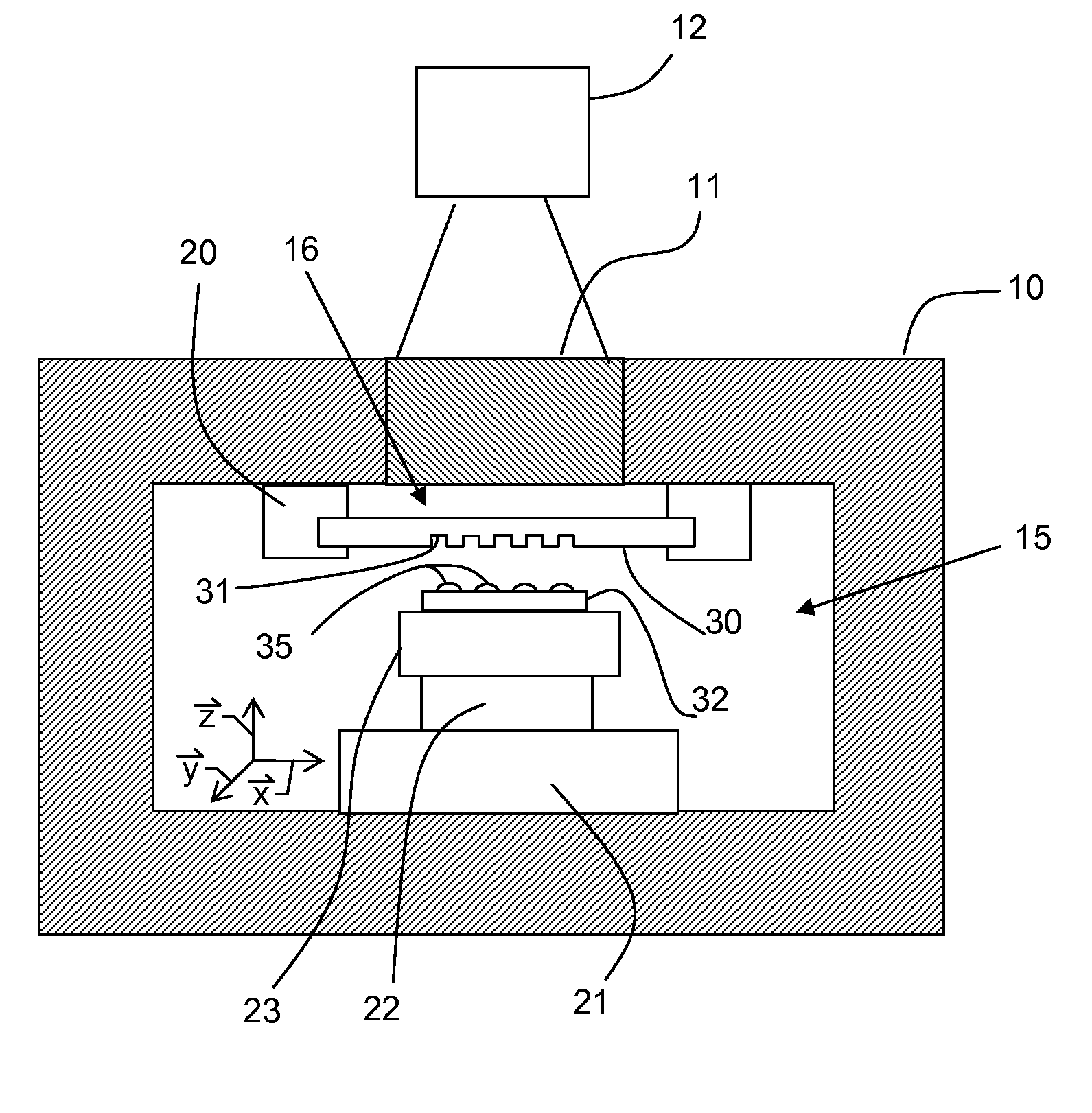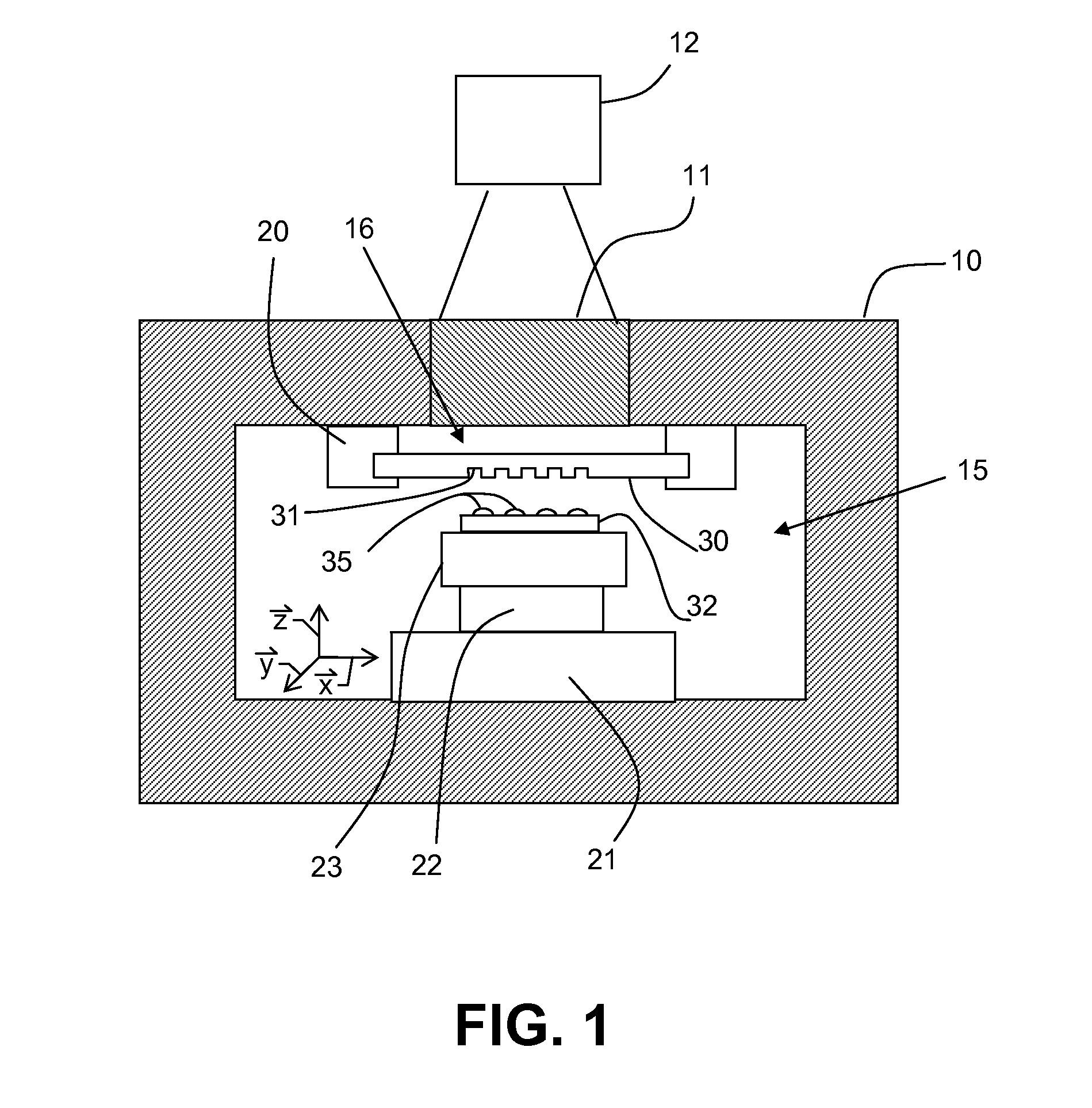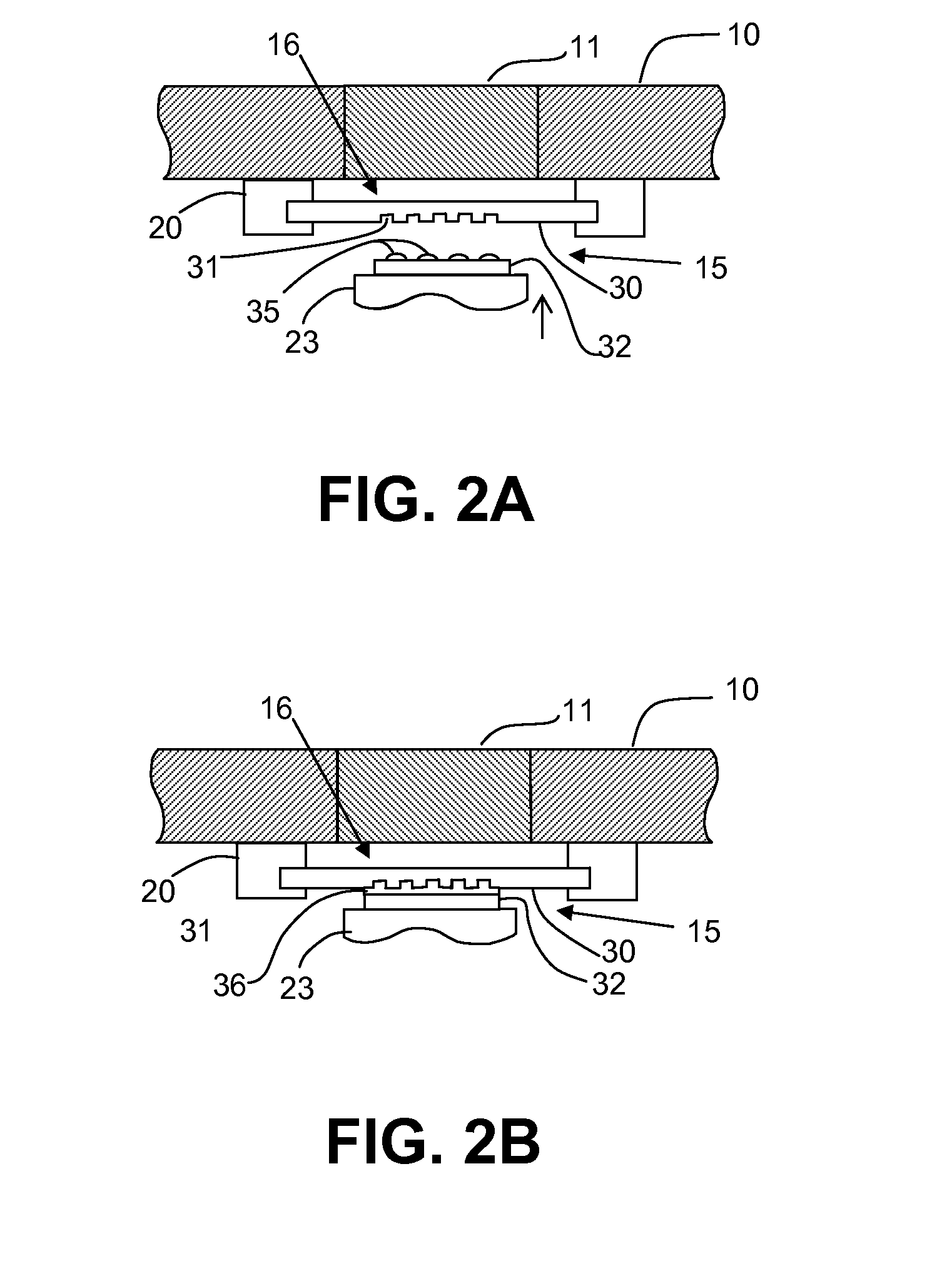Fast nanoimprinting apparatus using deformale mold
a nano-imprinting and mold technology, applied in the field of fast nano-imprinting apparatus using deformale molds, can solve the problems of not reaching the stage ready to meet the much higher requirements of industrial use, the cost of electron beam lithography to make the mold is averaged, and the nano-scale pattern writing speed of electron beam lithography is very slow
- Summary
- Abstract
- Description
- Claims
- Application Information
AI Technical Summary
Benefits of technology
Problems solved by technology
Method used
Image
Examples
Embodiment Construction
[0016]The descriptions assume that UV curable imprint is conducted if it is not clearly identified and UV curable imprint is used as example. However, the invention does not limit for UV curable imprint and also apply for thermo-plastic imprint. An ordinary skilled in the art who is familiar with nanoimprint technology can easily revise the embodiment described in the invention to implement the concept of the invention for all type of imprinting.
[0017]In accordance with the concept of the invention, referring to FIG. 1, the apparatus has a chamber 10 that can achieve vacuum or pressure inside. The top wall of the chamber has a light passing through section 11. Section 11 could be a transparent window made of quartz or glass. The section is able to hold vacuum seal and built-up pressure inside the chamber during operation. Section 11 allows a UV light passing through to provide UV curing exposure for UV curable imprint and a visible light passing through to view inside of the chamber...
PUM
| Property | Measurement | Unit |
|---|---|---|
| thickness | aaaaa | aaaaa |
| thickness | aaaaa | aaaaa |
| diameter | aaaaa | aaaaa |
Abstract
Description
Claims
Application Information
 Login to View More
Login to View More - R&D
- Intellectual Property
- Life Sciences
- Materials
- Tech Scout
- Unparalleled Data Quality
- Higher Quality Content
- 60% Fewer Hallucinations
Browse by: Latest US Patents, China's latest patents, Technical Efficacy Thesaurus, Application Domain, Technology Topic, Popular Technical Reports.
© 2025 PatSnap. All rights reserved.Legal|Privacy policy|Modern Slavery Act Transparency Statement|Sitemap|About US| Contact US: help@patsnap.com



